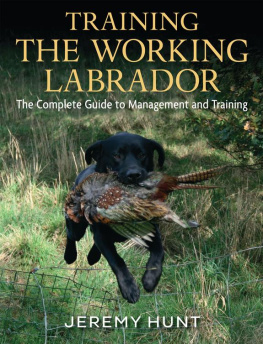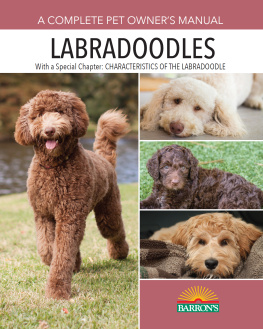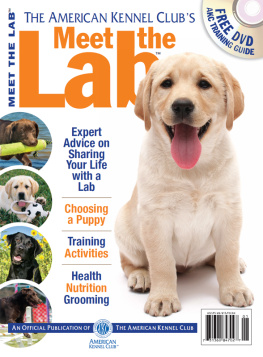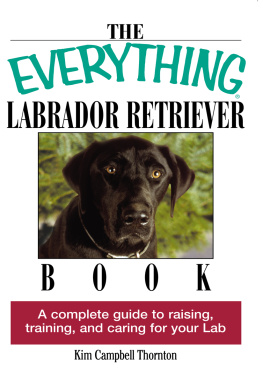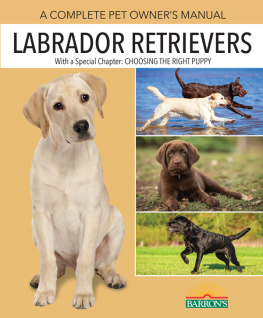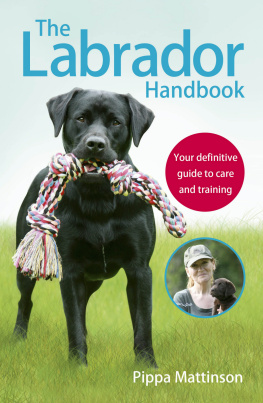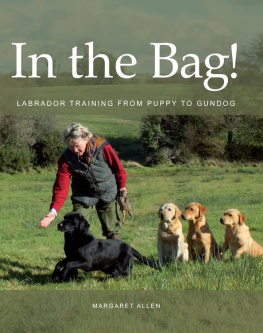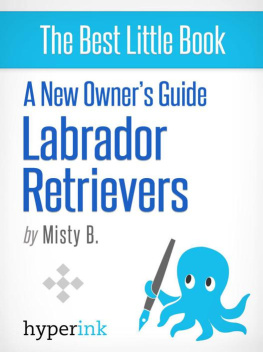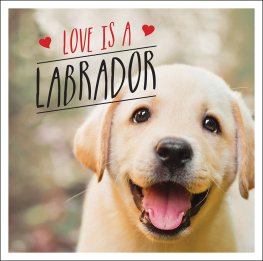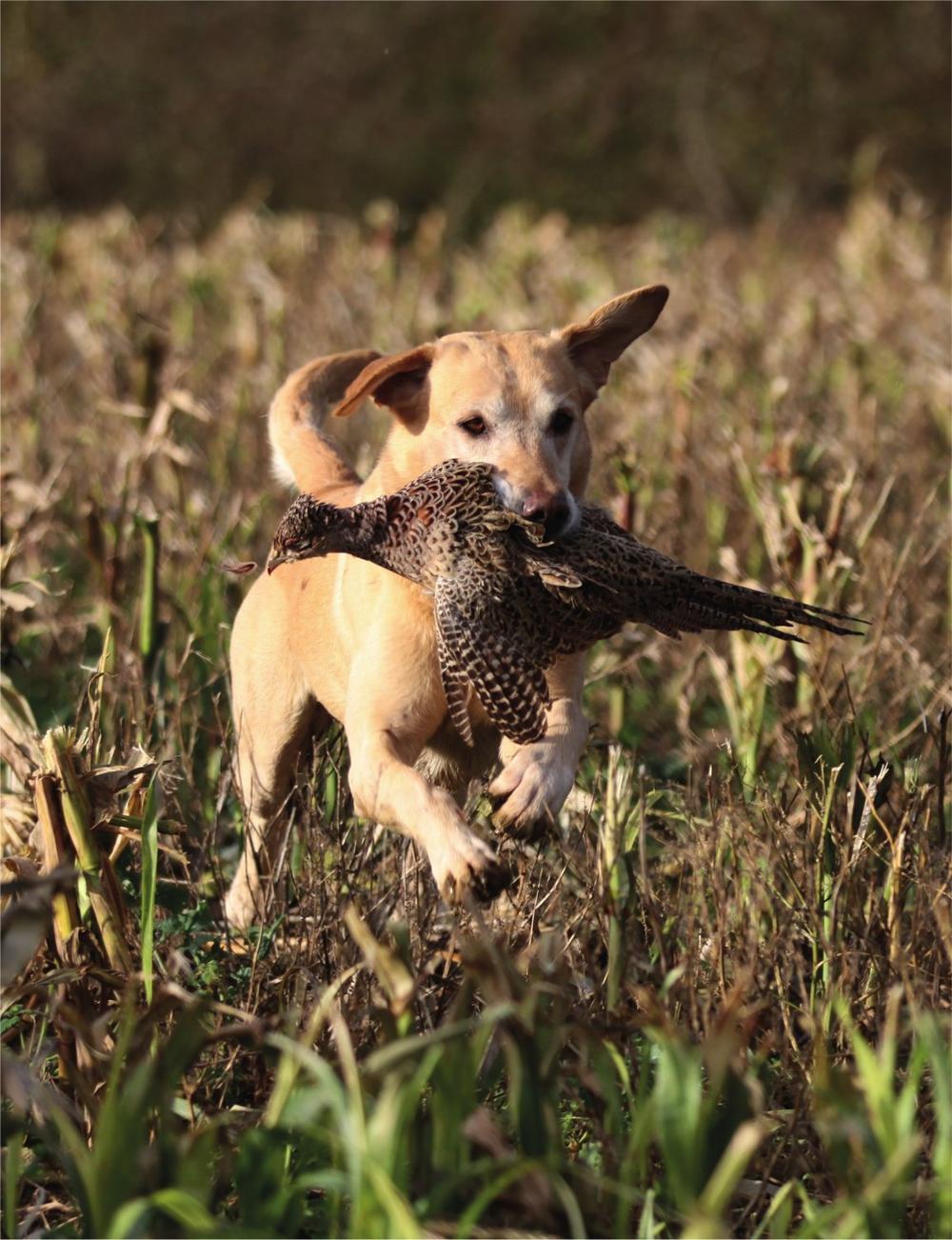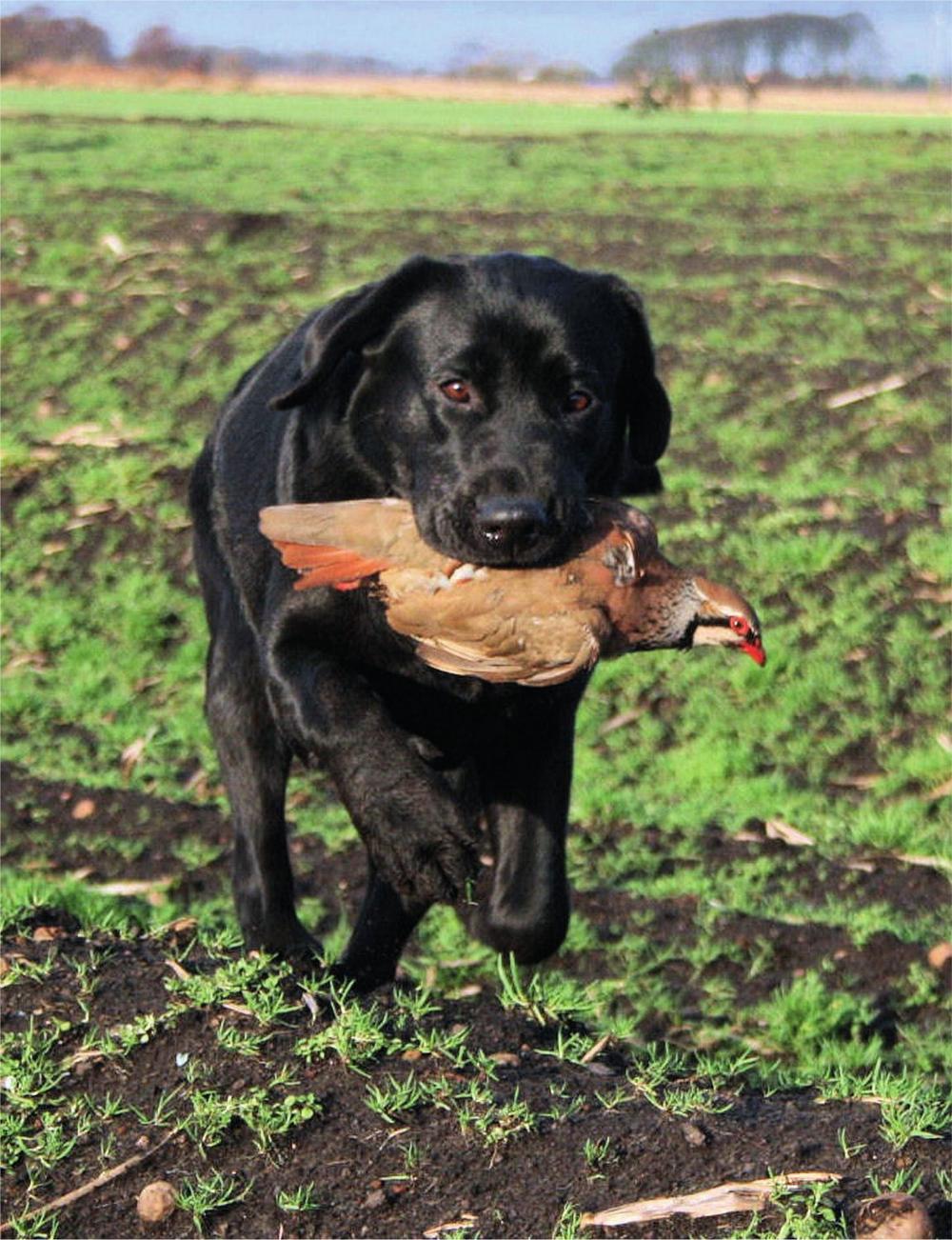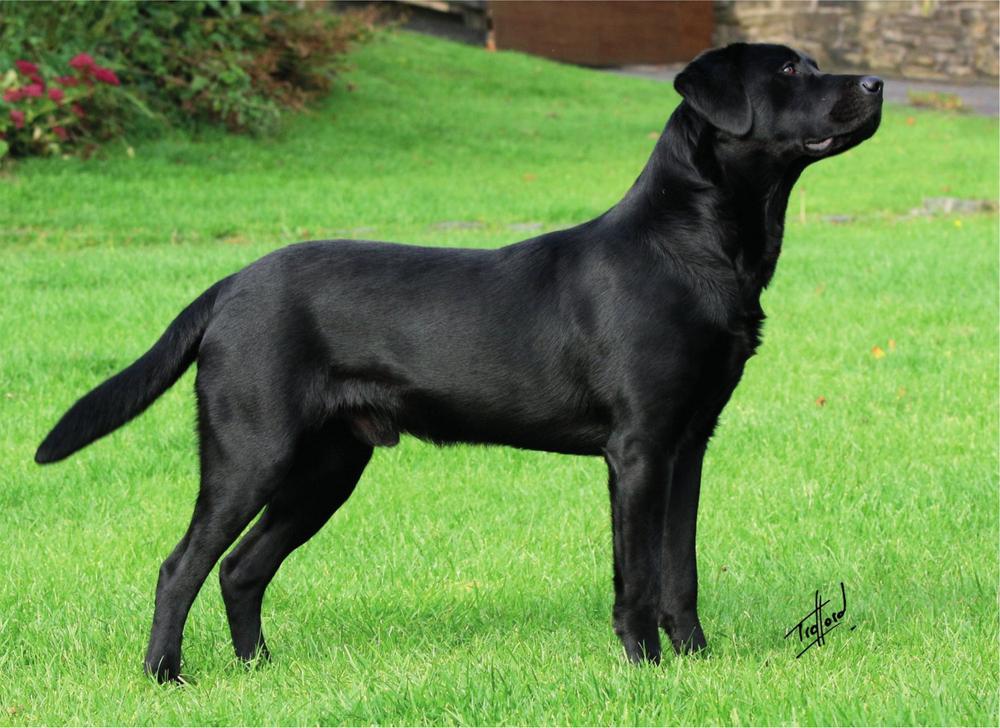Similarly there is equal disparity in the way working ability is perceived. Some show-bred dogs are trained by their owners to produce an acceptable level of skill as working gundogs. But however good their standards may be they rarely meet those required by the upper echelons of the working Labrador fraternity who have higher expectations in terms of speed, style, drive and hunting ability.
Not all working-bred Labradors are paragons of virtue in the shooting field. Many owners of shooting dogs tolerate shortcomings in their dogs working ability quite often because the dog hasnt received the training necessary to match its potential.
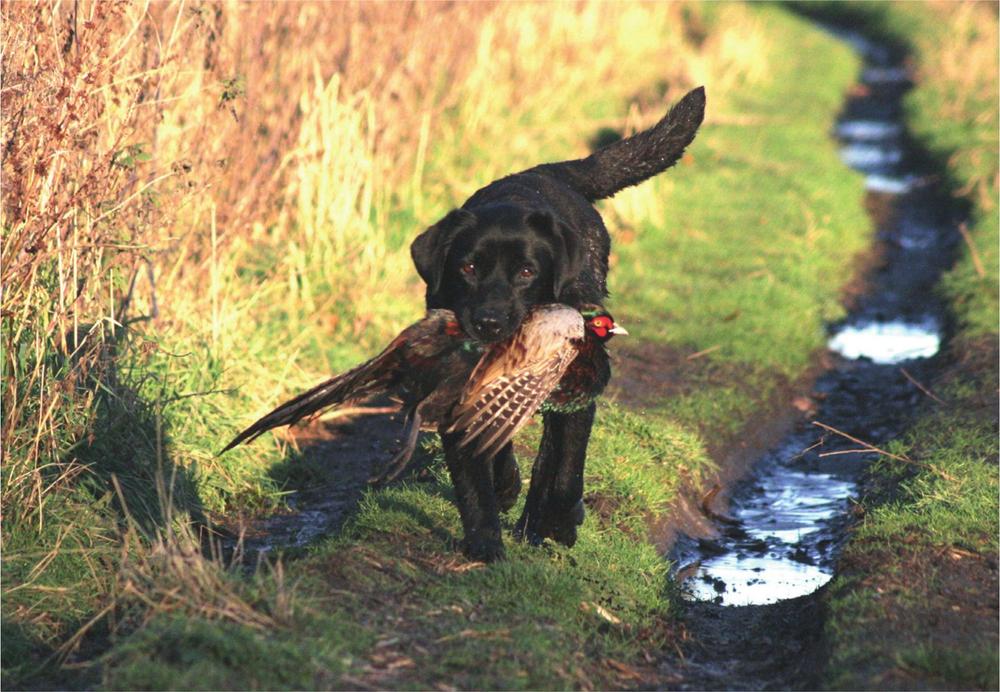
A bitch combining show and working breeding proving her skill as a shooting dog (Photo: Anne Taylor)
So within one breed we have show-bred Labradors and we have a leaner, more athletic and active type bred primarily for work as a gundog. While this book is aimed at those who own, or are about to own, a working Labrador with the primary objective of training the dog for shooting, picking-up or to compete at tests or field trials, its important to recognise the large population of working-bred Labradors living as pets or companions . These dogs would undoubtedly greatly enjoy learning the basic skills of a working gundog so I hope this book inspires those who own a working Labrador purely as a companion.
By embarking upon appropriate basic training these intelligent dogs can go some way to fulfilling the purpose for which they were bred. And in so doing help alleviate the boredom and frustration thats so often the root cause of the hyperactivity and behavioural problems seen in working Labradors living in a domestic non working environment.
While buying a Labrador thats going to become a working gundog means choosing a puppy or dog of the appropriate breeding, it isnt always quite as straightforward as some may assume. Theres certainly nothing quite so appealing as a Labrador pup, but its important not to get smitten by the first litter you look at. There are careful considerations to make based on information of which many prospective owners arent always aware.
To present a fair picture of the Labrador in all its guises its necessary to understand the origins of this remarkable breed and how it has become so popular. Of Canadian descent we are certain, but it was a black dog seen retrieving sticks out of Poole harbour in Dorset almost 200 years ago that triggered the first imports. The dog in question had seemingly arrived on a fishing boat from Newfoundland and was seen retrieving by the 2nd Earl of Malmesbury. Impressed by its skills in water the Earl was prompted to buy the dog for the shooting on his estate. Its success as a gundog led to more dogs of similar type being imported to the UK but it was the 3rd Earl of Malmesbury who actually decided to start breeding these dogs and he called them Labradors.
The Kennel Club recognises the Labrador as a gundog and, as for all breeds, it has a blueprint. This is known as the breed standard and lays down the desired appearance of each breed in terms of physical construction and other relevant traits including movement and temperament. This standard is the one to which those who breed Labradors for the show ring must adhere if they want to win awards because it is the standard upon which all dog show judges base their deliberations.
But the breed standard in itself creates a major problem for the Labrador . In the other 210 breeds recognised by the Kennel Club for instance breeds as diverse as Poodles or Afghan Hounds or Chihuahuas there is a breed standard which is the benchmark. Breeders keep the best pups for themselves to continue their breeding programme for the show ring and sell the rest as pets.
But while there remains only one breed standard for the Labrador, the type of dogs it inevitably encourages breeders to produce for the show ring has no bearing on those bred for work. The Labrador, despite having a Kennel Club breed standard, is not a single breed in terms of uniformity in looks and certainly not in purpose. There is no doubt that the Labrador per se performs all its various roles extremely well be that as an accomplished field trial dog, a working gundog, a show dog, a detection dog or a family companion. But why are there such considerable variations in the way the breed looks and how and why have they occurred?
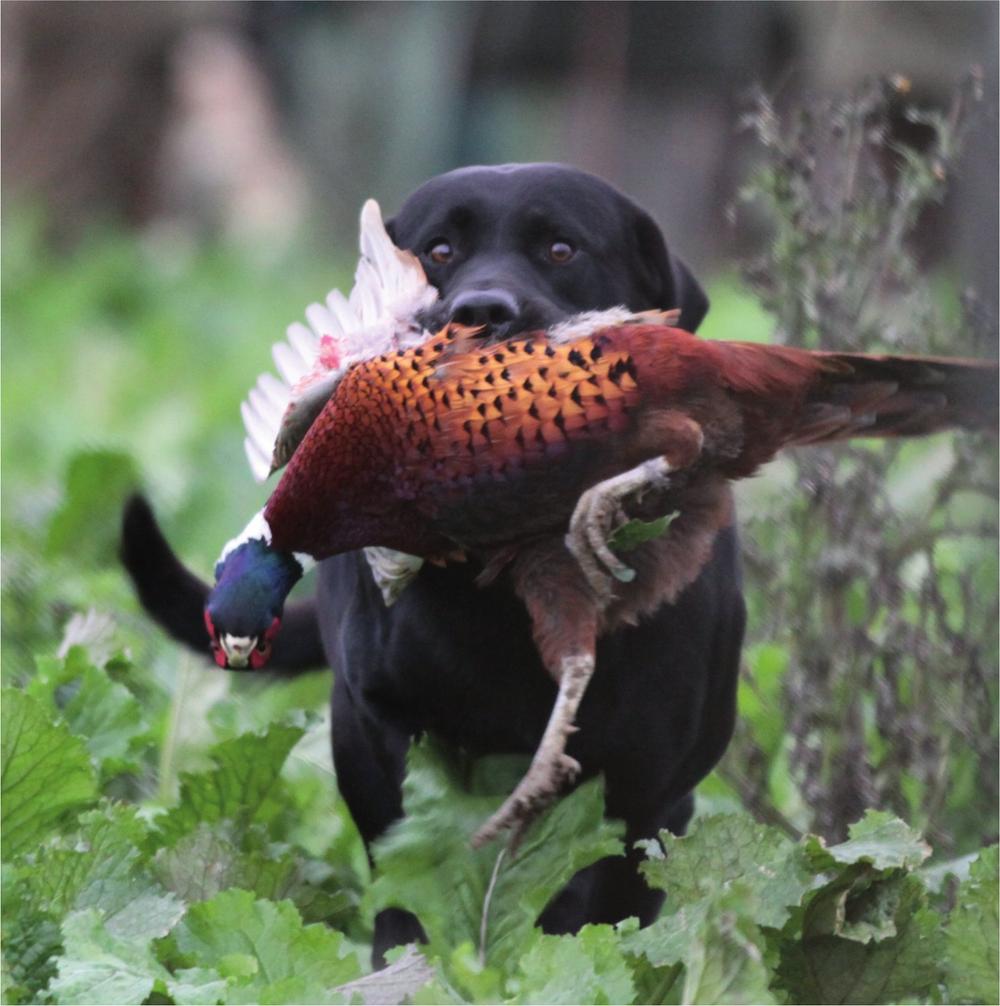
The working Labrador is the most popular dual-purpose gundog (Photo: Peter Bates)
Given that the modern Labrador is the result of a wide divergence of genetics used by breeders to produce dogs to fulfil an equally wide range of specific roles, the genetics responsible for producing dogs to satisfy the breeds primary function as a working gundog are totally separate from those used to produce Labradors for the show-ring. This division within the breed produces two distinct types as a consequence.
Show-bred and working-bred Labradors are most easily identified by their differing appearance. In essence the trend has been to breed working Labradors that are more athletic in their construction compared with those bred for the show-ring. But we live in a world of extremes and while there may now be the first signs of change as breeders on both sides of the divide seek moderation, the last 40 years have seen many show-bred Labradors become heavier and less active and working Labradors become lighter in their conformation and more racey in appearance. Yes, some breeders in both camps have sought not to follow these extremes be they show breeders or working breeders but in general no one can deny that today we have one Labrador breed that has become two.

